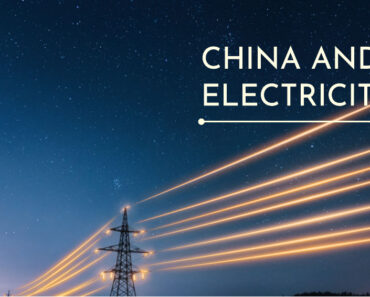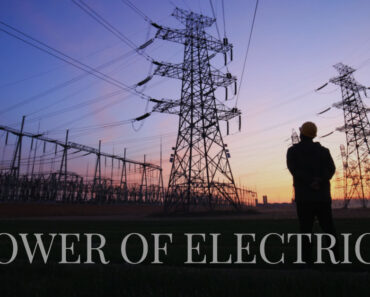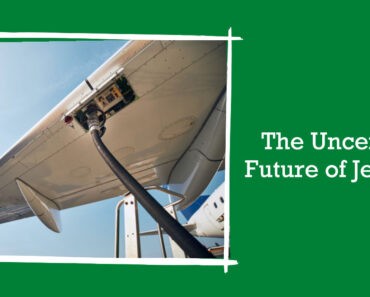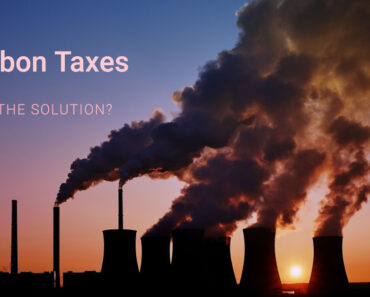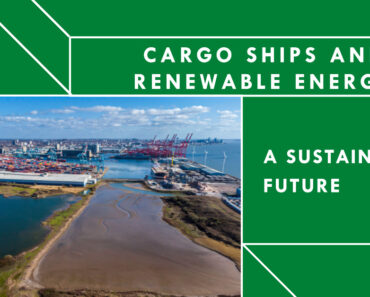The Saharan Desert, and North Africa at large, is one of the world’s biggest untapped energy resources. This desert’s solar energy may Algerian solar panels generate 3 times more electricity than German ones, enough to power the planet. The searing heat of these arid plains might now be an advantage. currently boost their economies. In Algeria, a 1-square-metre solar farm panel generates 5–7 kWh per day.
Increasing it to 1 square km generates 5–7 Gigawatt-hours day. That’s 1000 square km. generating 5-7 Terawatt hours daily. Enough to provide virtually all of Europe’s energy demands. Increase that by 10 to get 50-70 Terawatt hours per day. enough power the planet.
It’s impressive. Calculations on napkins fresh worldview. Solar Eutopia. Efforts have been made to make the easy mathematics a reality, however reality sometimes interferes with futuristic pie in the sky calculations. This dream has evaded every strategy. failed. This article explains why. Electricity Transport Is Expensive First is getting energy out to these rural areas. Currently Just two North African-European linkages exist. Both border Morocco and Spain. Two 700-MW hookups. Completed in 1998 and 2006. 2100 Megawatts from a third link planned before 2030. We would need 592 to 831 additional 700 Megawatt hookups to power Europe, ignoring transport losses and storage.
High Initial Cost We don’t merely lay wires between countries.
They’re amazing. complex, costly infrastructure. Morocco-third Spain’s interconnection is expected to cost $150 million. An massive investment with both nations paying half. 592 extra connections would cost at least 8.9 billion dollars. 150 million times 592 yielded that amount, but these linkages North Africa’s quickest path to Europe. They’ll be cheapest. to construct. Longer linkages are needed for a genuinely integrated grid. Tunisia to Sicily, Algeria to Sardinia and Northern Italy, Libya to Crete and then to Greece, Turkey, and the Middle East Network, developing enough European internal linkages to pass sun parsal north, wind south. This strategy requires billions. Despite this, European politicians strategy to link North Africa and the Middle East to Europe, they think costs are recoverable. Desertec was a German-led effort focused on a $500 billion generating and transmission fund North African and Middle Eastern infrastructure.
55 billion was invested in Mediterranean transmission. This investment would fund high-voltage AC transmission across shorter distances. gaps like Morocco-Spain and high-voltage direct current over larger distances. High-voltage AC transmission stops at a crucial distance.
make sense. AC and DC transmission losses per kilometer are plotted. DC loses less power every kilometer. To convert, our regional AC grid power to DC for these long-distance transmission links, we require costly transformers. Instead, plot cost versus distance, counting this infrastructure. This shows the DC and AC. AC lines cross at 500–800 km. DC gets cheaper at this breakeven threshold. Hence, high-speed lines linking Morocco straight to Spain, which covers 28 km, are not practical. voltage DC.
Longer Tunisia-Italy links will presumably use high-voltage direct current. High-voltage DC transmission losses are 3% per 1000 km in Germany. Tunisia is 1,800 km from capital. With this investment, electricity transmission money is doable. Technologies exist. Next generation. Desertec plan. Concentrated solar electricity, which operates differently, inspired Desertec. photovoltaic panels. Distributed concentrated solar power plants along the Sahara-Arabian Deserts. Morocco has the biggest concentrated solar plant. power plants worldwide. It has three sections: Noor 1, 2, and 3. 510 MegaWatts from concentrated solar power variability. Noor 1 and 2 are trough-based parabolic mirror systems with tubes. mirror’s center. Synthetic oil in the tube absorbs heat. 308000 square metres of 500,000 parabolic mirrors. Very hot oil It can boil water in a heat exchanger at 400 degrees Celsius. to power a grid-supplying steam turbine. Hot 400-degree oil molten salt heat storage system.
Molten salt storage Noor 1’s heat storage system can power the facility for three hours. Noor 2 holds 7 hours. This salt solidifies at 110 degrees, although The plant won’t run in the morning, therefore Noor 1 and 2 require fossil fuel. burning system to keep the oil system running and all system fluids at minimal operational temperatures overnight. This fossil fuel-burning technology may also power the plant. Eliminating natural gas peaker plants. Towers replace parabolic reflectors in Noor 3. It’s this. impressive circular facility north. That doesn’t appear industrial. like a modern burning guy art display.
Noor 3’s design eliminates the oil, pipes, and pumps of Noor 1 and 2, instead using mirrors arrayed in round towers. Mirrors concentrate light. on a single tower point, directly heating the molten salt, the working fluid. fluid, not oil. It’s considerably sunnier here. High temperatures result. 550 degrees water degrees. The tower-based system can employ more efficient steam turbines and molten salt. Noor III is the only tower-based concentrated solar power plant in the world. solar power system with molten salt storage after Nevada’s Crescent Dunes closed in 2019. Dune plant. After four years, Crescent Dunes closed in 2019. Because the facility failed to function, NV Energy terminated its purchase contract. requirements. Maintenance problems, including an 8-month closure, molten salt tank spill. Although fully functioning, the plant’s power cost $135 per megawatt hour whereas a neighboring solar facility managed $30. per megawatt. Here’s the crux. Concentrated solar power was quite competitive with photovoltaics per megawatt. Photovoltaics have gotten very inexpensive since 2009. Concentrated Noor and solar power cannot compete in this market. 1, 2 and 3.
They are measured by levelized cost of electricity. This is a plant-life average of power generation costs. Unfortunately, photovoltaic storage is frequently expensive. Concentrated solar thermal power’s inherent advantage. Going forward, the industry should use a storage-electricity metric. Yet…. (this (required to start next paragraph) Noor 4, a solar panel farm, is the latest development. 73 MW. Despite Desertec’s affordable solar panels, predictably failed. Space Concentrated solar thermal power requires plenty of land. Plants have minimums. viable operating temperature need enough mirrors to reflect that light.
Solar panels don’t Rooftop solar panels are possible. over car parks or agricultural fields to shade vegetation. We don’t need huge areas of land to work. Because they are so inexpensive, smaller solar farms in Germany may avoid transmission losses and avoid the tremendous financial risk of investing billions in a foreign nation. Since a Many investors avoid these turbulent nations.
The 2013 Algerian BP natural gas facility assault illustrates. why many North Africans would consider this a dangerous investment. “It’s a key economic resource for Algeria, although it stands alone in the midst of a large desert. Al Qaeda’s North African transit root made it tough. to defend and an appealing target for militants.” This is why Germany is investing in domestic photovoltaic generation. Germany generated 10% of its power from solar in 2020.
European countries using African natural resources to boost their economies has troubling historical precedent. This type of foreign investment secures European supply. When the host country requires that electricity for its grid, cross-border collaboration is challenging. To build their economy or stabilize their grid for current demands. Water for cooling, steam turbines, and mirror cleaning makes it much worse. Water Use Morocco’s facility utilizes 2.5–3 million litres of water annually. a 12-kilometer dam. Morocco is prone to droughts, therefore increasing water consumption only to meet Europe’s power demands by extracting water from Moroccan farms citizens, is worse. Power generation must be scaled technologically. reducing water consumption or pairing facilities using desalination facilities and irrigate nearby crops with any leftover water expand local economy. To transform Earth’s lifeless deserts into energy generators. grassroots movement to succeed.
Not a new imperialist megaproject with a bunch of assurances for the roughly half trillion dollar investment. Desertification and climate change have impacted North Africa hardest. and severe water shortages. This plan seems superficially nice. intents, exploited these nations most affected by Western imperialism. Industrialisation. It’s obvious they meant this. The the technology created to allow European countries to produce renewable power The proposal failed due to domestic demands. This idea never helped Africa. The concept is still viable. These nations have solar energy potential.
Morocco can best set an example. Spain’s proximity permits quick European grid interconnections. Compared to North African countries, its government is stable. -0.33 stability index. Algeria, Tunisia, Libya, and Egypt are lowest. Morocco offers plenty of sun and arid breezes. its shore. Morocco can invest in energy and export excess to Europe. Leading by example. Slowly becoming a fossil fuel energy exporter. Infrastructure for locals. An African nation primarily benefiting itself. The chance Africa will use solar energy. Cross-border technology energy trading exists, and investments are increasing trade capacity with Morocco and Spain evenly sponsored this 3rd interconnector, assuring fair play. Growing and upgrading electricity is complex.
Electrical networks are Earth’s biggest machineries. 100+ generators wired, relayed, and switched between nations. The job Handling it by hand and making good judgments for one person is difficult, and more grid infrastructure is becoming smart grid-controlled. by algorithms. Algorithm developers work in battery farms. to maximize profit by buying and selling stored power, and those jobs are among today’s highest-paid and most-desired.

